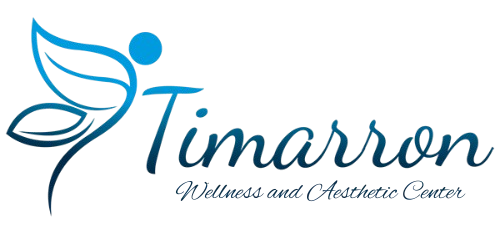Not only do we need to treat the body as a whole, we also need to treat the skin as a whole! We do many different amazing skin treatments and procedures here at Timarron Aesthetic Center, but no single treatment will transform your skin by itself. For true transformation to occur, it is necessary to treat every aspect of your face which includes the epidermis (pigment, redness, texture) the dermis (wrinkles, sagging, thin skin), the shape of the face (loss of bone structure and volume) and the movement of the face (lines in the forehead or around the eyes due to muscle contraction).
A recent dermatological journal put it this way:
“The desired therapeutic anti-aging effect of the skin is a continuous, step-by step process, which combines various methods of skin bio-revitalization and rejuvenation, augmentation, restoration of each skin layer individually and in the light of many other factors—from a style of the life to the immune, genetic, emotional and health status in general.”
I couldn’t agree more!
In this week’s blog, let’s get to know the layers of our skin and what causes the changes to our skin. Next week we will discuss what can be done to prevent and treat the aging that naturally occurs:
Our skin is divided into three sections: the Epidermis on top, the Dermis below and the Subcutaneous layer underneath. The epidermis is made up of many layers of cells, while the dermis consists of connective tissue, hair follicles, blood vessels, and sweat glands. The subcutaneous layer consists of mainly fat cells.
The epidermis, or the top layer of skin, provides a waterproof barrier that protects the body from the environment, creates skin tone and provides our sense of touch. The basal layer of the epidermis contains stem cells which constantly divide and push older cells to the top. This layer also contains melanocytes which produce pigment in our skin known as melanin which protects the deeper layers of the skin from the harmful effects of UV radiation. Patches of melanin in the skin cause birthmarks, freckles and age spots. Melanoma develops when melanocytes undergo malignant transformation.
There are 2 types of aging:
- Intrinsic aging-this is the process that takes place regardless of external influences.
- Each year after the age of 20, our skin produces 1% less collagen in the dermis.
- The skin’s natural exfoliation process begins slowing significantly, causing dead skin cells to accumulate on the surface, resulting in a dull appearance.
- In our 30’s, the transfer of moisture from the dermis to the epidermis slows and fat cells start to shrink. This causes skin to look dull and thin.
- In our forties, collagen is no longer produced. The collagen and elastin fibers break, thicken, stiffen, clump together, and lose their elasticity. This results in wrinkles and aging lines.
- In our fifties, sebaceous (oil) glands shrink, and the skin becomes dry, easily bruised, damaged, or broken. In women, menopause causes a decrease in estrogen levels, leaving the skin drier, thinner, more sensitive, and less toned.
- Starting in our 30’s, the facial fat pads in the upper and mid face gradually and continually atrophy (waste away), while those in the lower face tend to become fuller (hypertrophy). This causes the upper and middle parts of our face to lose structure and fullness, while the lower part becomes heavier. Temples and cheeks become hollow, lips turn down, jawline sags, and jowls can form. Our overall facial shape goes from a youthful heart shape to a much less youthful pyramid shape.
- Extrinsic aging-this is a result of environmental damage, and can be controlled to some extent
- Environmental influences such as pollution, smoking, poor diet, ultraviolet radiation, and overall unhealthy lifestyle generate free radicals which damage collagen and elastin in the dermis.
- Glucose itself presents a threat. It forms plastic-like molecules known as age-related glycation end-products (AGES) by crosslinking with proteins. These complexes damage skin proteins by causing them to be more brittle and less elastic.
- UV radiation directly damages DNA and results in the generation of free radicals, making it the crucial factor in the acceleration of wrinkling skin.
- The skin’s protective mechanism from exposure of sunlight is to produce more melanin, which leads to age spots, freckles, and even skin cancers.
- As a result, we see effects like thickening of the cornified layer (outermost layer of epidermis), precancerous changes (an example is actinic keratosis), skin cancers, formation of freckles and sunspots, and huge losses of collagen, elastin, and glycosaminoglycans (GAGs). This causes the skin to become rough, thin, uneven in tone, and wrinkled.
Prevention is the key to minimizing the effects of extrinsic aging. An SPF of at least 35, preferably zinc oxide (see previous blog), is necessary for sun protection against UVA and UVB. It is also imperative to avoid creating more inflammation, which leads to free radical formation. As we have discussed, following a high-antioxidant diet, exercising, sleeping well, and mindfulness practices will help your body to neutralize free radicals.
To sum it up, skin aging is the result of the complex interaction between your lifestyle, exposure to environmental factors, your immune system, genetics, as well as your emotional and medical state. Prevention of damage from environmental factors will have a huge impact on your long-term skin health.
This may all sound hopeless, but next week I will detail how to combat and reverse the effects of intrinsic aging using the many powerful treatment options available at Timarron Aesthetic Center! Stay tuned!
